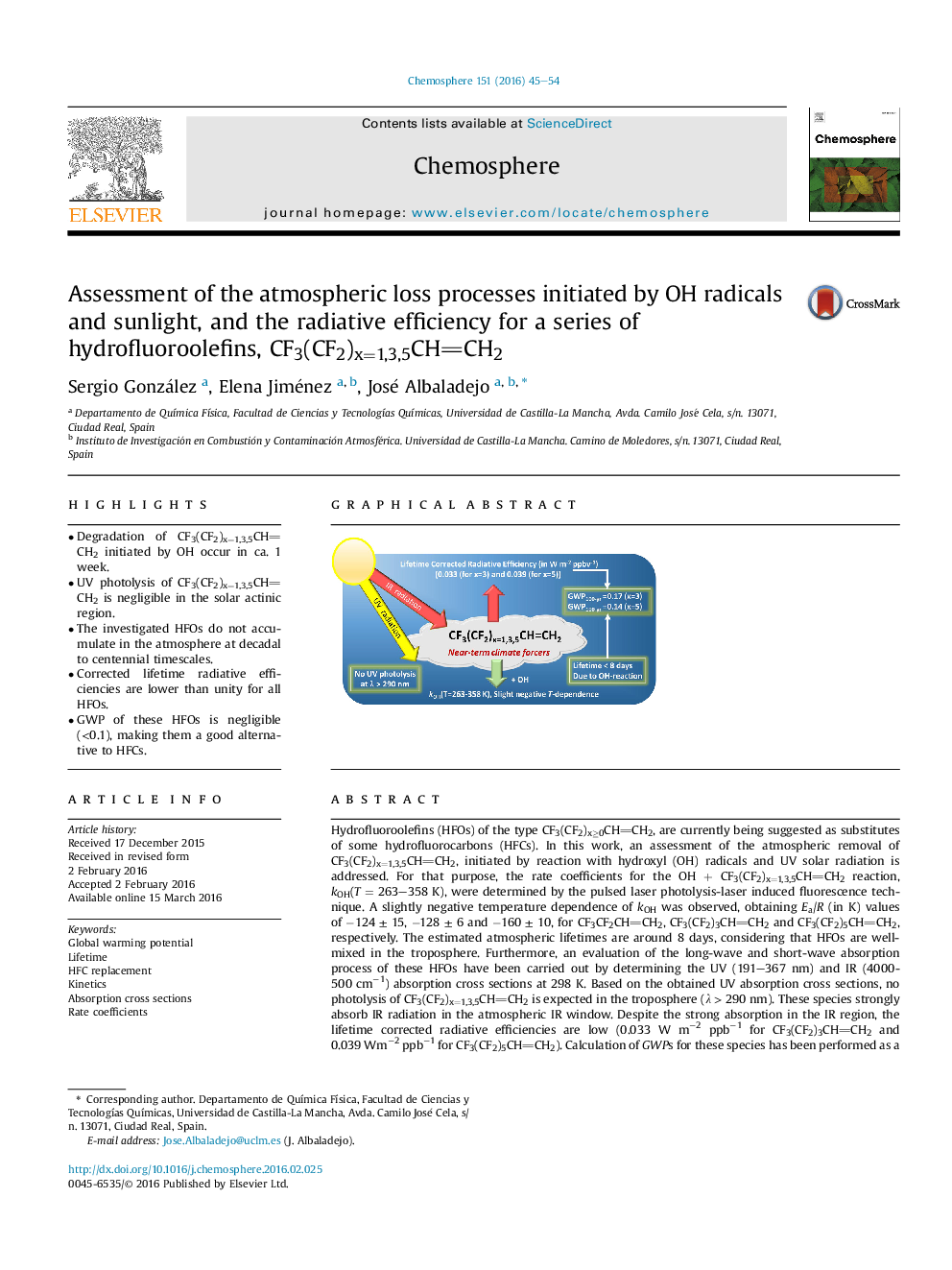| کد مقاله | کد نشریه | سال انتشار | مقاله انگلیسی | نسخه تمام متن |
|---|---|---|---|---|
| 4407754 | 1618820 | 2016 | 10 صفحه PDF | دانلود رایگان |

• Degradation of CF3(CF2)x=1,3,5CHCH2 initiated by OH occur in ca. 1 week.
• UV photolysis of CF3(CF2)x=1,3,5CHCH2 is negligible in the solar actinic region.
• The investigated HFOs do not accumulate in the atmosphere at decadal to centennial timescales.
• Corrected lifetime radiative efficiencies are lower than unity for all HFOs.
• GWP of these HFOs is negligible (<0.1), making them a good alternative to HFCs.
Hydrofluoroolefins (HFOs) of the type CF3(CF2)x≥0CHCH2, are currently being suggested as substitutes of some hydrofluorocarbons (HFCs). In this work, an assessment of the atmospheric removal of CF3(CF2)x=1,3,5CHCH2, initiated by reaction with hydroxyl (OH) radicals and UV solar radiation is addressed. For that purpose, the rate coefficients for the OH + CF3(CF2)x=1,3,5CHCH2 reaction, kOH(T = 263–358 K), were determined by the pulsed laser photolysis-laser induced fluorescence technique. A slightly negative temperature dependence of kOH was observed, obtaining Ea/R (in K) values of −124 ± 15, −128 ± 6 and −160 ± 10, for CF3CF2CHCH2, CF3(CF2)3CHCH2 and CF3(CF2)5CHCH2, respectively. The estimated atmospheric lifetimes are around 8 days, considering that HFOs are well-mixed in the troposphere. Furthermore, an evaluation of the long-wave and short-wave absorption process of these HFOs have been carried out by determining the UV (191–367 nm) and IR (4000-500 cm−1) absorption cross sections at 298 K. Based on the obtained UV absorption cross sections, no photolysis of CF3(CF2)x=1,3,5CHCH2 is expected in the troposphere (λ > 290 nm). These species strongly absorb IR radiation in the atmospheric IR window. Despite the strong absorption in the IR region, the lifetime corrected radiative efficiencies are low (0.033 W m−2 ppb−1 for CF3(CF2)3CHCH2 and 0.039 Wm−2 ppb−1 for CF3(CF2)5CHCH2). Calculation of GWPs for these species has been performed as a function of the horizon time, providing values higher than unity for a short-period term, decreasing dramatically for longer periods. Therefore, it is concluded that emissions of these species do not affect the radiative forcing of climate, making them suitable replacements of large-GWP HFCs.
Figure optionsDownload as PowerPoint slide
Journal: Chemosphere - Volume 151, May 2016, Pages 45–54